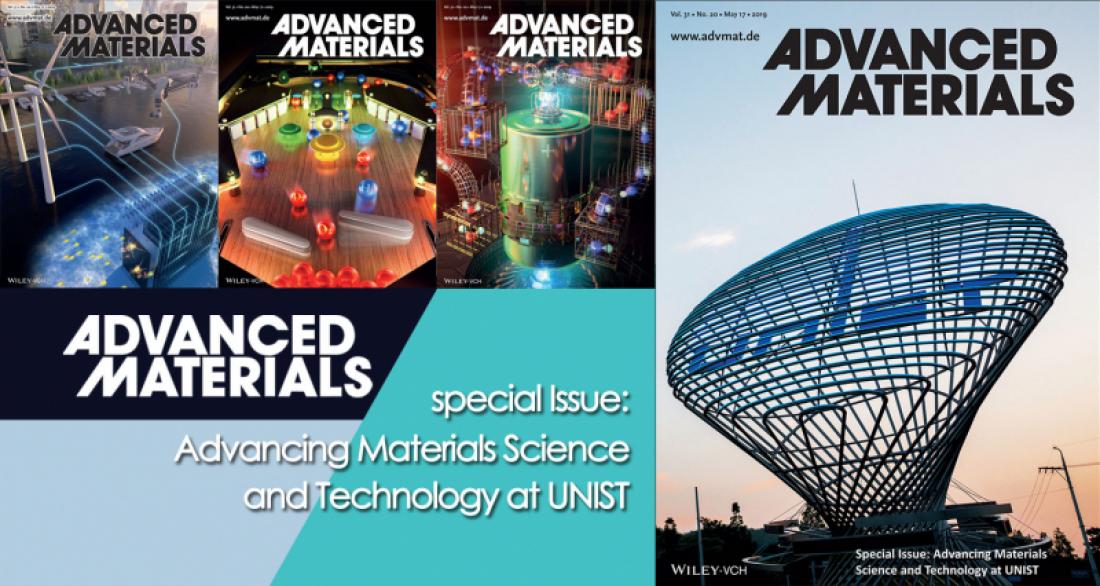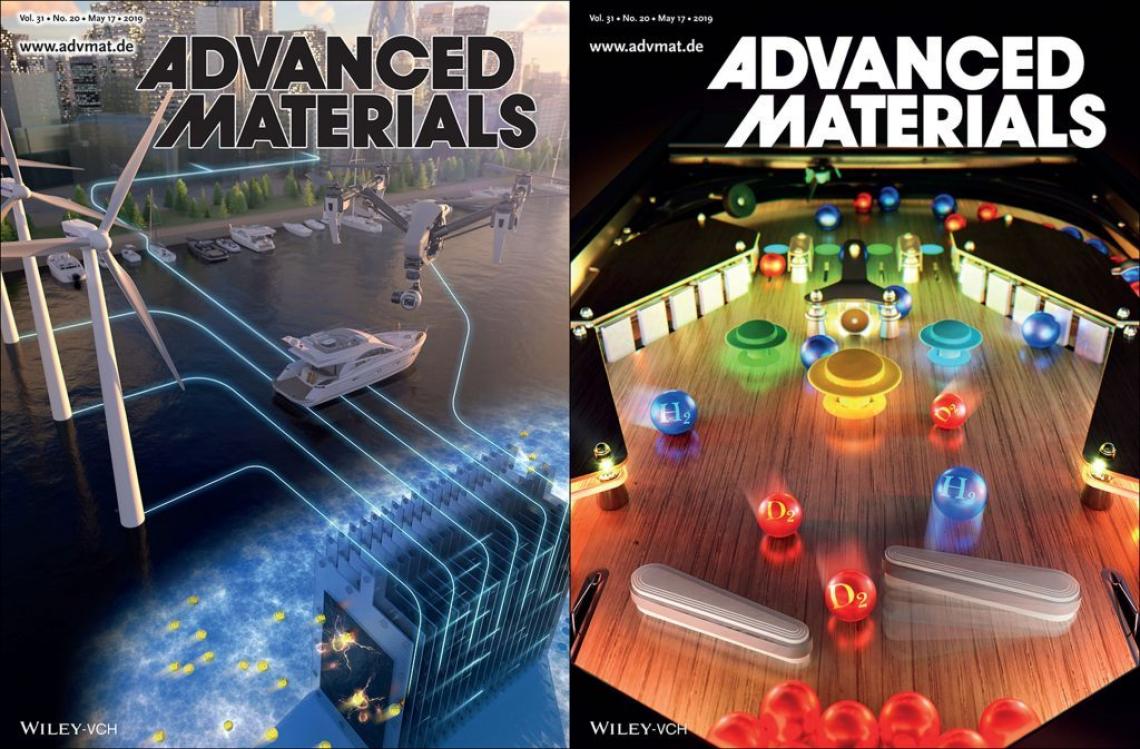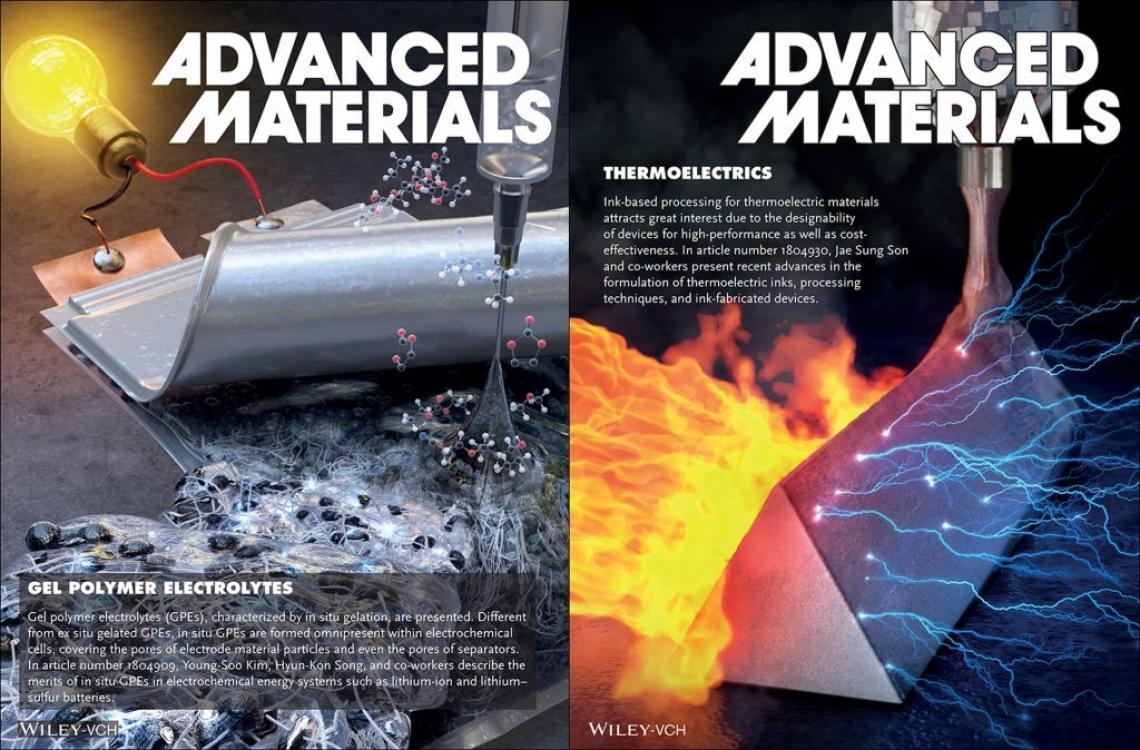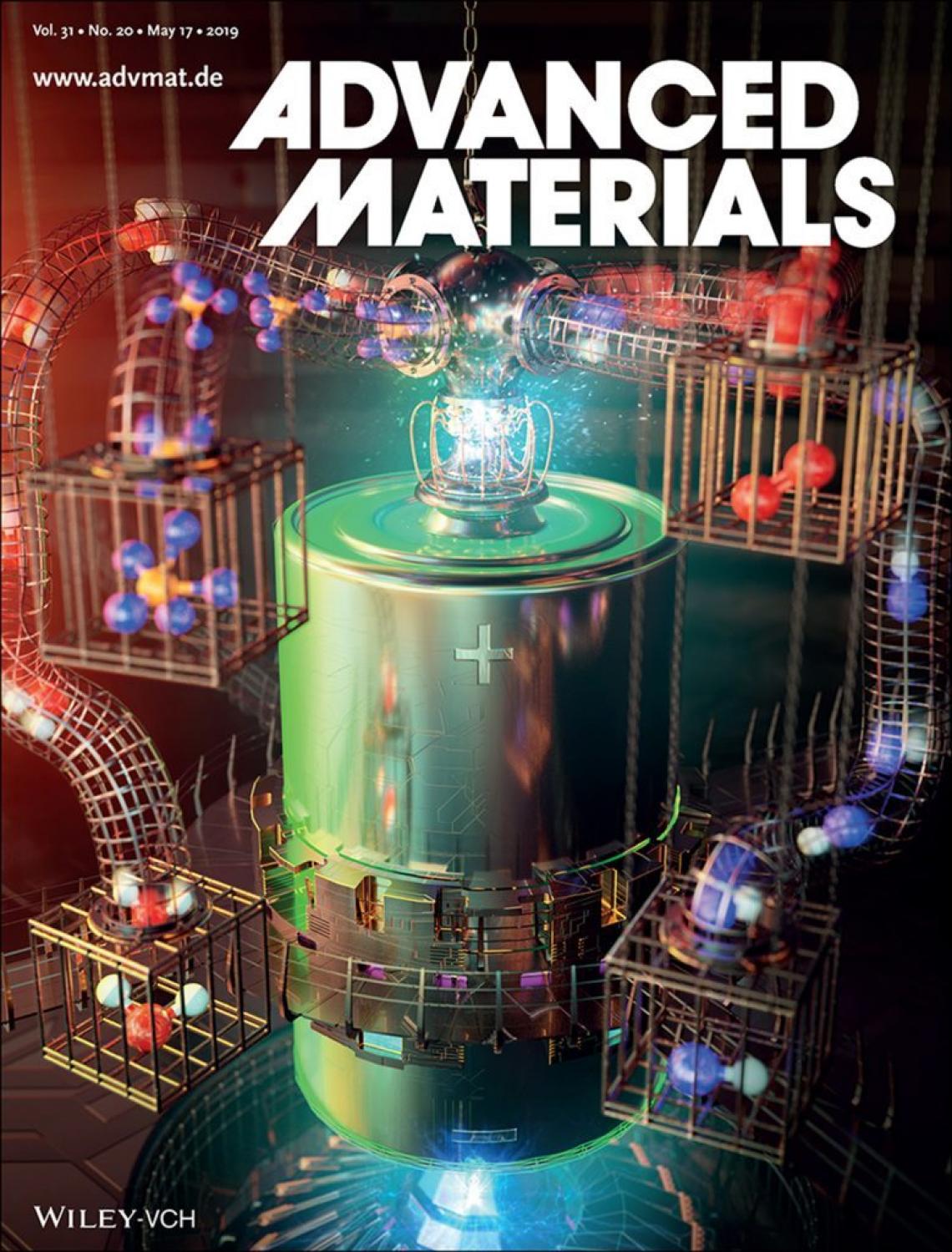Advances Materials publishes a special issue, highlighting some of the outstanding works of UNIST.
An international scientific journal that covers a broad spectrum of materials science research has published a special issue, highlighting some of the outstanding works of UNIST.
Published on May 17, this special issue presents examples of the 14 strongly competitive research activities in the field of materials science and engineering at UNIST to celebrate its 10th Anniversary.
Click HERE to view more on Advancing Materials Science and Technology at UNIST.
UNIST’s new symbolic landmark has been featured as the cover image of Advanced Materials on May 17, 2019.
Founded in 1989, Advanced Materials is an international scientific journal that publishes the peer-reviewed research papers on the latest works of materials science and engineering. As of 2017, the Impact Factor (IF) is 21.950.
This special issue starts with an editorial by Professor Jaephil Cho in the School of Energy and Chemical Engineering and Dean of Research Affairs at UNIST. There, he shares the secrets to UNIST’s remarkable success as a world-class research institute in the field of materials science since its opening in 2009, as well as their major research areas.
Additionally, 14 scientific papers and 2 research news have been published in the journal. According to the journal, the above findings in Advanced Materials had the highest number of citations among 122 papers, published by UNIST.
The introduced research findings feature contributions in the fields of ▲ Energy conversion and storage materials, such as Li‐, Na‐, and H2‐storage materials ▲ Catalytic materials for hydrogen production ▲ Perovskite materials and photovoltaics ▲ Thermoelectric materials.
Above images, illustrating seawater batteries and hydrogen-deuterium separation, have been also featured inside the May 17th issue of the journal.
“The revealed findings in this special issue have been emerged as technologies that are highly practical and commercializable,” says Dean Jaephil Cho of Research Affairs at UNIST. “This is the result of putting emphasis on research quality that can make significant impact on our lives.”
This special issue features four images, highlighting some of the outstanding works of UNIST. A picture of UNIST’s new symbolic landmark has been featured as the cover image of the journal, as well as the representative image to celebrate UNIST’s 10th anniversary. Two other images, illustrating new type of energy platform using seawater batteries, as well as materials for hydrogen-deuterium separation, have been also featured in the journal. On the back cover of this issue includes an image, illustrating the research process on the exploration of new materials to stabilize lithium-ion batteries.
The above images, illustrating gel polymer electrolytes and thermoelectrics have been also highlighted as frontispiece in the journal.
“UNIST boasts three top scientists (HCRs) in the fiend of materials science and has achieved a series of scientific breakthroughs, thereby turning itself into a world-leading university in related fields,” says President Mooyoung Jung of UNIST. “I am delighted to be able to introduce the rapid growth of UNIST in a short history of 10 years via world-renowned Journal, Advances Materials.”
Meanwhile, this is the second time Advanced Materials to highlight research activities of domestic universities through a special issue. So far, there have been 24 cases in which this journal deals with a specific university or institution through a special issue.
The above image illustrates the research process on the exploration of new materials to stabilize lithium-ion batteries.







